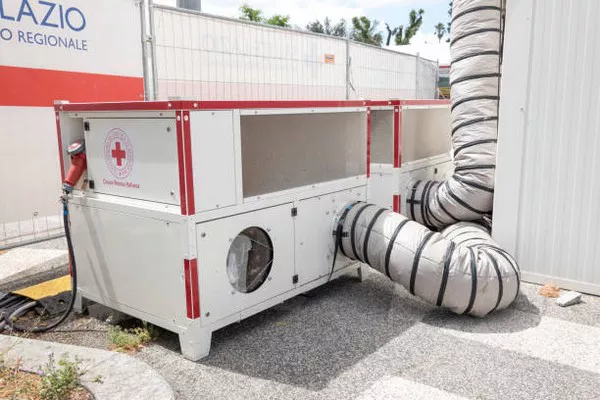Generac is a leading name in the generator industry, known for its reliability, performance, and range of options. Whether you’re considering a generator for backup power at home, outdoor events, or commercial use, understanding the various sizes of Generac generators is essential. This article will delve into the sizes available, their features, applications, and considerations to help you choose the right generator for your needs.
Overview of Generac Generators
What is Generac?
Generac was established in 1959 and has since grown into a trusted manufacturer of generators and related products. They offer a wide range of models, from portable generators for recreational use to robust standby generators for homes and businesses.
Types of Generac Generators
Portable Generators: Ideal for outdoor activities and emergency power needs.
Home Standby Generators: Permanently installed units that automatically provide backup power during outages.
Commercial Generators: Designed for larger power demands in commercial and industrial applications.
Understanding Generator Sizes
Power Measurement
Generators are measured in watts, which indicates their power output. The wattage can vary widely based on the type of generator:
Starting Watts: The initial surge of power needed to start appliances.
Running Watts: The continuous power required to keep appliances operating.
Key Size Categories
Generac generators can be categorized based on their wattage ratings:
Portable Generators: Generally range from 1,000 to 10,000 watts.
Home Standby Generators: Typically range from 7,000 to 50,000 watts.
Commercial Generators: Can range from 10,000 watts to several megawatts.
Portable Generators
Size and Power Range
Portable Generac generators are perfect for various applications, including camping, tailgating, and emergency backup for small devices. Here are some common sizes:
1,000 to 3,000 Watts: Suitable for basic power needs, such as lights, small appliances, and tools.
3,000 to 5,000 Watts: Can power larger appliances like refrigerators and sump pumps.
5,000 to 10,000 Watts: Capable of running multiple appliances simultaneously, including larger tools and equipment.
Popular Models
Generac GP2200i: A lightweight portable inverter generator with 2,200 watts.
Generac GP3300i: Provides 3,300 watts and is ideal for camping or small power needs.
Generac GP8000E: A powerful 8,000-watt generator for home backup or job sites.
Home Standby Generators
Size and Power Range
Home standby generators are designed to provide seamless power during outages. They automatically turn on when the grid goes down and can run on natural gas or propane. Common sizes include:
7,000 to 10,000 Watts: Suitable for small to medium homes, covering essential appliances.
10,000 to 20,000 Watts: Ideal for larger homes, allowing for multiple appliances to run simultaneously.
20,000 to 50,000 Watts: Designed for larger residences or those with high power demands, capable of running HVAC systems, water heaters, and more.
Popular Models
Generac Guardian 70432: A 22,000-watt standby generator designed for whole-home backup.
Generac Guardian 6438: Offers 14,000 watts, ideal for homes with moderate power needs.
Generac Protector Series: Available in sizes up to 50,000 watts for large-scale power demands.
Commercial Generators
Size and Power Range
Commercial generators are built for industrial applications and can handle significant loads. They range from:
10,000 to 50,000 Watts: Suitable for small to medium-sized businesses, providing backup for essential operations.
50,000 to 500,000 Watts: Designed for large enterprises, including data centers and manufacturing facilities.
Popular Models
Generac XD5000E: A durable 5,000-watt portable generator suitable for job sites.
Generac RD Series: Ranges from 50 kW to 150 kW for larger commercial needs.
Choosing the Right Size
Assessing Your Power Needs
Identify Essential Appliances: List the appliances you need to power during an outage, noting their wattage requirements.
Calculate Total Wattage: Sum the running watts of all devices and consider starting watts for appliances with motors.
Consider Future Needs: Anticipate any additional power needs, such as future renovations or expansions.
Factors to Consider
Fuel Type: Determine if you prefer gasoline, propane, or natural gas. Some Generac models are dual-fuel.
Portability: For portable generators, consider weight and ease of transport.
Noise Level: Check decibel ratings if noise is a concern, especially in residential areas.
Advantages of Generac Generators
Reliability and Performance
Generac generators are known for their durability and reliable performance. They undergo rigorous testing to ensure they can handle various conditions.
Automatic Transfer Switch
For home standby generators, Generac offers automatic transfer switches, which seamlessly switch power sources during an outage, providing convenience and peace of mind.
Warranty and Support
Generac provides robust warranties on their generators, along with customer support to address any issues that may arise.
Maintenance and Care
Routine Maintenance
Regular Inspections: Check oil levels, air filters, and fuel systems.
Testing: Run the generator periodically to ensure it operates correctly.
Long-Term Storage
Fuel Management: Use fuel stabilizers if storing for extended periods.
Clean the Generator: Keep the unit clean and free of debris to maintain efficiency.
Conclusion
Generac generators come in a variety of sizes and specifications, catering to a wide range of power needs. From portable models for outdoor activities to robust home standby units for emergency power, understanding the available options is crucial for making an informed decision. By assessing your power requirements, considering the type of generator that best fits your situation, and staying on top of maintenance, you can ensure reliable power when you need it most. Whether for personal use or commercial applications, Generac offers a solution that meets your needs.
Related topics:

